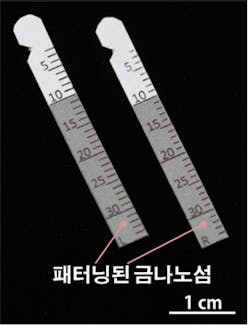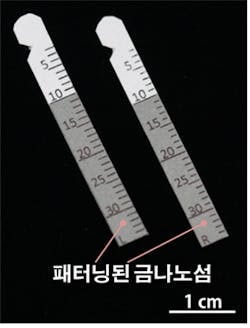Surface-enhanced Raman spectroscopy diagnoses gout using a single teardrop
Korea Advanced Institute of Science and Technology (KAIST; Daejeon, South Korea) researchers have developed a novel diagnostic strip for gout (a condition that induces pain in joints because of uric acid crystal buildup) using a single teardrop. The technology, which uses surface-enhanced Raman spectroscopy (SERS), analyzes biological molecules in tears for a noninvasive diagnosis, significantly reducing the time and expense previously required for a diagnosis.
Related: Lens-free microscopy platform shows promise for rapid gout diagnosis
The research team, led by Professor Ki-Hun Jeong of the Department of Bio and Brain Engineering, developed an affordable gout diagnostic strip by depositing metal nanoparticles on paper. The technology is not only useful for diagnostic medicine and drug testing, but also in other areas such as field diagnoses that require prompt, accurate detection of a certain substance.
Therapeutic treatments for gout exist to administer pain relief and stimulate uric acid discharge. Such treatments work for temporary relief, but have significant limitations—patients are required to regularly check uric acid concentrations, as well as control their diets. Therefore, simpler ways to measure uric acid would greatly benefit gout control and its prevention in a more affordable and convenient manner.
Existing gout diagnostic techniques include measuring uric acid concentrations from blood samples or observing uric acid crystals from joint synovial fluid under a microscope. These existing methods are invasive and time-consuming. To overcome their limitations, the research team uniformly deposited gold nanoislands with nanoplasmonic properties on the surface of paper that can easily collect tears.
Nanoplasmonic techniques collect light on the surface of a metal nanostructure, and can be applied to disease and health diagnostic indicators as well as for genetic material detection. Further, metals such as gold absorb stronger light when it is irradiated, and thus can maximize light concentration on board surfaces while maintaining the properties of paper. The developed metal nanostructure production technology allows the flexible manufacturing of nanostructures on a large surface, which in turn allows flexible control of light concentrations.
The research team grafted SERS onto paper diagnostic strips to allow uric acid concentration measurements in teardrops without additional indicators. The measured concentration in teardrops can be compared to blood uric acid concentrations for diagnosing gout.
"Based on these research results, our strip will make it possible to conduct low-cost, no-indicator, supersensitive biological molecule analysis and fast field diagnosis using tears," Jeong explains. "Tears, as well as various other bodily fluids, can be used to contribute to disease diagnosis and physiological functional research."
Ph.D. candidate Moonseong Park participated in the research as the first author of a paper describing the work. The strip, Park says, can be produced on a large scale using an existing semiconductor process.
Full details of the work appear in the journal ACS Nano; for more information, please visit http://dx.doi.org/10.1021/acsnano.6b06196.

